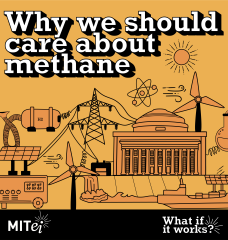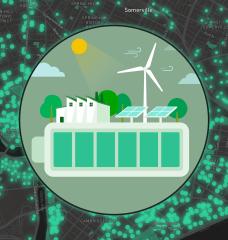
South Asia and the Need for Mass Energy
In the developing world, South Asia is one of the fastest-growing economic regions. The region houses 1.89 billion (2019), almost one-fourth of the world’s total population. With huge trade and economic potential, the region paces at 7% GDP growth in 2015 and projected a 7.3% growth by 2017. Each country is capitalizing its own strongest point to pace up its economic and infrastructure cooperation within the countries.
In the coming decade, the Asian Development Bank expects that the SASEC (South Asia Sub-regional Economic Cooperation) countries’ energy demand will increase due to rising per capita income, economic growth, and domestic and commercial energy consumption. Considering the interim energy demand, The Asian Development Bank (ADB) projects the energy demand by 2020.
SASEC – Trailblazing Energy Cooperation
SASEC brings together regional prosperity through economic and energy cooperation within the South Asian countries, i.e.: Bangladesh, India, Bhutan, Nepal, Sri Lanka, and the Maldives. While the program adopts a project-based partnership to boost trade and economic benefit through infrastructure development, energy security along with intraregional power trading remains one of the major areas for infrastructural development.
In this context, energy remains the major source of cooperation within the regional countries. Under the approved 40 ADB projects, SASEC’s Operational Plan 2016-2025 emphasizes on energy cooperation with ambitious extension plan in the East and Southeast Asia. However, numerous individual, regional, bilateral and multilateral cooperation schemes are being undertaken, and there rests the need for assessing incentives, potentials, and challenges for individual and synergistic energy cooperation in the SASEC operation plan.
Incentives for Increasing Cooperation
The energy sector in South Asia faced some global erratic behaviors in the last few decades. However, most of the factors proved to be rather reinforcing in the face of their global ominous effects.
The Decline in oil prices: The global oil price decline from $90-100/barrel to below $40-50/barrel was the greatest bust since the 1990s. However, the greatest benefit enjoyed by this hit was by the South Asian countries. Pakistan, for example, recorded a 50% pass-through of its oil products. On the other hand, India imports 75% of its oil and falling of the price eased the current account deficit, at the same time India’s private and public upstream companies enjoyed fuel subsidies. Bhutan enjoyed lowered expenditure on fuel. Nepal enjoyed 15% elastic GDP to oil prices and Maldives 20% for imports. However, Bangladesh and Pakistan faced limited impact from the oil price plunge as both the countries promote compressed natural gas for transport and household sectors at respectively 70% and 83%.
Unnerved to the global financial crisis 2007-2009: While the major developed and developing countries faced business failure and stock market collapse, the South Asian countries already had indigenous energy bases. As a result, the domestic energy market did not let the extenuating factors such as global financial turmoil, foil the intercountry energy cooperation.
Increased Capital Inflow: Although Bhutan, Maldives, Nepal and Sri Lanka were adjusting the trade deficit at a slower pace in 2015, Bangladesh and India have achieved substantial progress in this sector. This progress paved the way for further infrastructural development, which ultimately made way for smoother energy cooperation.
Potential and Prospect in Energy Cooperation
Since its establishment in 2001, SASEC put special emphasis on energy for regional cooperation. In this regard, SAARC established the SAARC Regional Energy Trade Study (SRETS) in 2011 and very recently SASEC undertook an operational plan for transport, trade, and energy dubbed SASEC Operational Plan 2016-2025. This project is aggressively working to address energy security development required for energy infrastructure and integration platforms for power trade within countries of mutual interest through the cheapest operational strategy.
As South Asia is transforming towards major economic and infrastructure development, it requires a mother lode of energy stockpile. As the hydrocarbon bases are rapidly depleting with massive industrial and infrastructural use and aggressive domestic consumption and rural electrification, this ultimately paves the way for an alternative nuclear power source. But due to myriad conflicting variables, South Asia is already the least integrated region in the world, conveying only 5.77% intraregional trade of total trade. The power & energy sector is the least in terms of energy cooperation and unused energy utilization.
SAARC Secretariat reveals a Phase II study on Regional Economic Integration which shows that coal will be the dominant energy source in South Asia by 2020. The scarce but predominant energy resources in SASEC countries are hydrocarbon (crude oil and natural gas) and renewable energy (solar, wind and hydropower). India, Bangladesh, and Pakistan have major coal and natural gas reserves. Nepal, Sri Lanka, and Bhutan possess abundant hydropower potential. Nepal relies mostly on imported diesel. These countries are generally deficient in fossil fuel reserves and the existing mines are depleting rapidly with heavy investment in infrastructural and industrial development. In this concern, hydropower and renewables contain promising frontiers in terms of an alternative power source.
Hydropower: Cumulatively, the SAARC countries have the hydropower generation potential of about 350 GW, with only 14% being used. However, most of the countries are enriched with sufficient hydropower potential most of which is still untapped. For example, Bhutan’s rivers flow 4 km to 5 km down from the Himalayas which can be turned into hydropower projects. After mitigating indigenous energy need, Bhutan can export the hydropower in energy deficit countries like India and Bangladesh.
Nepal also has large hydropower energy potential that can be exported to India, Bangladesh, and Sri Lanka. Bangladesh has limited hydropower potential. On the other hand, Sri Lanka’s primary energy is hydropower and fossil fuel, whereas the hydropower resources have not been fully harnessed.
While Bhutan with increased foreign investment is now embarking on three new hydropower projects, Sri Lanka is going for policy reforms to boost its service sector growth. Both of these nations are expected to be benefitted from the tourism sector through these developments.
Renewable Energy: Although SASEC countries have scarce and unevenly dispensed fossil fuel resources, they are enriched with alternative and renewable energy sources. However, these mostly require infrastructural and institutional development. For example, if the potential land areas available for wind farms are accounted then India has the potential of generating more than 100 GW wind power. Sri Lanka possesses an untapped 20 GW capacity, only a limited amount of which is being utilized. In the coastal areas, especially in the Bay of Bengal and offshore islands, Bangladesh has unused wind power potential and limited used solar power, while the Maldives has wind power capacity and solar power potential. However, due to land scarcity in the Maldives, the prospect of solar power utilization has not gained much practical application.
Theoretically, India has more than 5,000 TWh (per year) solar energy capacity, considering maximum utilization of 4 kWh–7 kWh per square meter every day.
When considering the solar photovoltaic (PV) cells, it requires calculating the prospect of geographic aspects such as available open land, unutilized roof-top and financing unit and technological variables such as storage technology and transmission units. Even considering these factors, the SASEC countries can harness a 14-19% solar energy from the photovoltaic (PV) cells after incurring the energy loss.
Challenges for Energy Cooperation
SASEC countries are confronting increasing power demand against limited power supply. The region’s average per capita electricity consumption (716 kWh) was far below the world average of 3,566 kWh in 2015.
The region’s electricity generation shows the dominance of a single fuel mix while Bangladesh heavily relies on natural gas as its principal fuel source. However, the actual reserve is depleting rapidly and it is planning to set up a coal-based power plant. India has utilized only 33% of its hydropower potential.
Bhutan and Nepal depend mostly on hydropower for electricity generation, but they have not fully utilized their potential. Bhutan can export the excess hydropower to India, but both of these countries get reduced supply in the lean seasons. The Maldives relies mostly on imported diesel for power generation. However, Sri Lanka relies on multiple fuel mixes such as oil, hydro, diesel, and coal.
The region also lacks a proper blueprint for energy infrastructure and cooperation. The lack of concentrated energy infrastructure is not only hampering the opportunity for exploitation of unutilized energy bases but also discouraging the adaptation of international best cases from global energy cooperation. In this regard, the international best practices, if embraced, will reduce dependence on energy import and illegal syndication and increase cooperation for clean and renewable energy.
Aside from the depleting energy sources and reliance on a single fuel economy, SASEC countries lack a coordinated approach to develop and optimally share the energy resources. Other prevalent challenges are political instability, security concern and lack of mutual trust.
Among others, the SASEC energy strategy needs to address the following key issues:
- Increased energy deficit
- Increasing import dependence
- Unutilized renewable energy resources
- Need for regional power market development with extensive capacity building and diversified energy sources
- Lack of congruous policy framework under SAARC and SASEC strategies
- Poor technical, institutional infrastructure for effective inter-country energy cooperation
- Lack of interest for fund disbursement in long term projects of energy infrastructure, such as feasibility studies, long term constructions and commissioning the private entities.
Way Forward
None of the SASEC countries can realize its full economic potential unless a conjoint cooperation strategy is taken. Based on the corner points discussed in this paper, the following recommendations can be adopted for a regional energy cooperation strategy:
- Develop a regional energy market under the SASEC Operational Plan 2016-2025;
- Recognize the priority sectors for immediate energy investment;
- Develop energy infrastructure for efficient fuel and energy mix;
- Include renewable energy source in the national and regional energy structures;
- Reduce import dependency through cross border energy sharing;
- Develop robust institutional capacity and technical knowhow of advanced energy infrastructure;
- Excavate the optimal use of primary energy bases with environmental concerns in mind.
- Emphasis on carbon-free green energy through advanced optimization of alternative energy
- Develop and adopt a strategy of energy-efficient technology for maximum energy conservation.
As South Asia as a whole is advancing towards economic prosperity through increased trade volume, redefined geopolitical strategies and mega-regional initiatives, it is imperative that without proper energy infrastructure and cooperation schemes these strategies and initiatives cannot be fully optimized for their greater ambitions. In this regard, the SASEC platform can be an initial platform to orchestrate and initiate the needed blueprint for energy infrastructure development. More specifically, the SASEC Operational Plan 2016–2025 can achieve the maximum of its objectives of intraregional cooperation only if internal and external stimuli are identified, unutilized energy sectors are connected after assessing individual country’s needs and challenges are addressed in the most effective and mutually beneficial ways.






